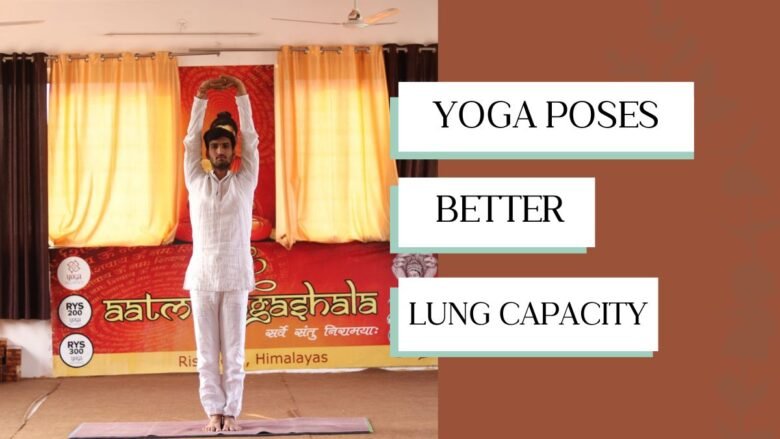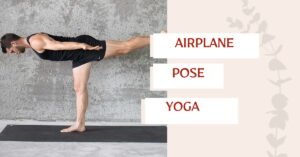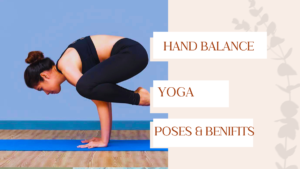Looking to boost your well-being and vitality? Think about this: increasing your lung capacity is a game changer, and we’ve got just the thing to help you do it. At Aatm Yoga Shala, we believe in the ancient practice of yoga as a powerful tool to connect your body, mind, and spirit.
Our curated selection of yoga poses for better lung capacity is designed to not only strengthen your respiratory system but also to enhance your overall health and wellness. Join us to explore these transformative poses and breathe your way to a more vibrant life.
How Do Your Lungs Work?
Your lungs play a crucial role in keeping you alive and well, functioning as the centerpiece of your respiratory system. When you inhale, air enters through your nose or mouth, traveling down your windpipe (trachea) into two large tubes (bronchi), each leading to one lung. Inside the lungs, these tubes branch out into smaller tubes (bronchioles), ending in tiny air sacs (alveoli).
It’s in these microscopic sacs that oxygen from the air is transferred into your bloodstream, and carbon dioxide, a waste product, is moved from the blood to be exhaled. This remarkable exchange occurs every time you breathe, illustrating the lungs’ indispensable role in maintaining the body’s equilibrium.
Main Causes of Lung Damage
The lungs, crucial for breathing, are vulnerable to various factors that can impair their function and health. Understanding these risks is the first step towards prevention and maintaining optimal lung capacity. Here are some primary causes of lung damage:
- Air Pollution: Inhalation of pollutants, including particulates, gases, and chemicals from vehicles, industries, and even natural sources like wildfires, significantly deteriorates lung health.
- Smoking: Tobacco smoke is laden with harmful chemicals, making smoking the leading cause of lung cancer and chronic obstructive pulmonary disease (COPD).
- Occupational Hazards: Exposure to toxic substances such as asbestos, coal dust, and silica in the workplace can lead to conditions like asbestosis and black lung.
- Infections: Respiratory infections, including pneumonia, tuberculosis, and COVID-19, can cause acute and sometimes long-term damage to lung tissue.
- Indoor Pollutants: Radon gas, household cleaning agents, and mold release toxic spores and chemicals that can harm lung health when inhaled over time.
list of Yoga poses for better lung capacity
- Tadasana (Mountain Pose)
- Bhujangasana (Cobra Pose)
- Setu Bandhasana (Bridge Pose)
- Nadi Shodhana Pranayama (Alternate Nostril Breathing)
- Sukhasana with Anulom Vilom Pranayama (Easy Pose with Alternate Nostril Breathing)
- Ustrasana (Camel Pose)
- Purvottanasana (Upward Plank Pose)
- Savasana with Deep Breathing (Corpse Pose with Deep Breathing)
- Ardha Matsyendrasana (Half Lord of the Fishes Pose)
- Kapalbhati Pranayama (Skull Shining Breathing Technique)
Mountain Pose (Tadasana)
How to do it: Stand with your feet together, arms relaxed by your sides. Imagine yourself rooting into the earth, lift your chest, and roll your shoulders back. Lengthen your spine. This pose may seem simple, but it’s here where you start to develop awareness of breath and alignment, which are vital to enhancing lung capacity.
Benefits: Encourages an awareness of your breath, promoting deeper inhales and exhales, and sets the foundation for proper alignment in other poses.
Deep Breathing (Pranayama)
How to do it: Find a comfortable seated or lying position. Place one hand on your chest and the other on your abdomen. Inhale deeply through your nose, expanding your abdomen, then your chest. Exhale slowly through your mouth.
Benefits: Strengthens your diaphragm, the primary muscle used in lung function, and improves respiratory health by increasing air circulation in your lungs.
Cat-Cow Pose (Marjaryasana-Bitilasana)
How to do it: Start on all fours. For Cow, inhale as you drop your belly towards the mat, lift your gaze, and open your chest. For Cat, exhale as you round your spine toward the ceiling, tucking your chin to your chest.
Benefits: This dynamic duo of poses increases flexibility in your spine, opening up your chest and heart center, which will allow for deeper breaths and a greater lung expansion.
Bridge Pose (Setu Bandhasana)
How to do it: Lie on your back with your knees bent and your feet hip-width apart. Press into your feet and lift your hips towards the ceiling. Interlace your fingers beneath you or place a block under your sacrum for support.
Benefits: Expands your chest, shoulders, and throat, and strengthens the lungs, further helping to increase lung capacity and alleviate symptoms of respiratory conditions like asthma.
Cobra Pose (Bhujangasana)
How to do it: Lie on your stomach with your palms on the mat under your shoulders. Inhale as you lift your chest off the mat by straightening your arms, drawing your shoulders back, and extending your neck.
Benefits: Stretches the muscles in the chest, lungs, shoulders, and abdomen, while also helping to open the heart and clear the passageways for a full breath.
Warrior I & II (Virabhadrasana I & II)
How to do it: From a standing position, step one foot back about 3-4 feet, pointing it at a slight angle. Bend your front knee directly over your ankle.
Benefits: These warrior poses help to expand the chest and increase the capacity of your lungs. They also encourage deep breathing through naturally deepening the breath to sustain the hold.
Triangle Pose (Trikonasana)
How to do it: Stand with your feet wide apart. Extend your arms parallel to the ground and reach out over the extended leg, bringing your hand as far down your leg as you can comfortably reach.
Benefits: Opens the chest, lungs, and shoulders, while simultaneously lengthening the spine and stimulating abdominal organs, which can lead to better digestion and improved lung function.
Fish Pose (Matsyasana)
How to do it: Lie on your back, place your hands under your hips, palms facing down. Elbows hug into your sides, inhale, and press into your forearms and elbows.
Benefits: Fish Pose expands the chest, stretches the front body, and tones the organs, including the lungs, by physically forcing you to breathe more deeply while holding the pose.
Bow Pose (Dhanurasana)
How to do it: Lie on your stomach, bend your knees, and reach for your ankles. Inhale, lifting your chest and knees off the floor as you pull your feet and hands in the opposite direction.
Benefits: This deep backbend not only expands the chest and shoulders but also deeply stretches the abdomen, which can enhance your diaphragm’s ability to move and allow you to take deeper breaths.
Seated Forward Bend (Paschimottanasana)
How to do it: Sit on the floor with your legs straight in front of you. Inhale as you reach your arms overhead, then exhale to hinge at the hips, reaching for your shins, ankles, or feet.
Benefits: Calms the brain and helps relieve stress and mild depression, while also stretching the spine, shoulders, hamstrings, and stimulating the liver, kidneys, ovaries, and uterus, which can help improve lung elasticity.
How To Optimize Your Lungs With Yogic Breathing
- Awareness: Observe your natural breath for a few days. Note if it’s shallow or deep, fast or slow.
- Diaphragmatic Breathing: Practice belly breathing to encourage full oxygen exchange.
- Pranayama Practices: Daily practice of techniques like Nadi Shodhana and Kapalbhati to enhance lung function.
- Asanas with Breath Control: Connect breath with movement in yoga to improve respiratory efficiency.
- Breath Retention: Try kumbhaka with caution to increase lung capacity.
- Relaxation and Observation: End sessions in Savasana to integrate benefits and adjust to changes.
- Daily Consistency: Regular practice is crucial for improving lung health.
What is the best exercise to increase lung capacity?
- Deep breathing exercises enhance lung capacity.
- Pranayama is the most effective for increasing lung capacity.
- Pranayama, a key yoga component, uses breath control techniques to boost lung efficiency and capacity.
- Techniques like Nadi Shodhana (Alternate Nostril Breathing) and Kapalbhati (Skull Shining Breath) strengthen the lungs.
- These exercises increase lung capacity, purify the blood, and improve autonomic nervous system functions.
- Daily Pranayama practice is recommended for those looking to boost their lung capacity, starting with guided sessions for beginners.
Conclusion
The practice of yoga offers a profound way to connect with your breath and enhance your lung capacity. By incorporating yoga poses for better lung capacity into your daily routine, you can experience a myriad of benefits that extend beyond the mat. Whether you’re aiming to boost your endurance, manage your stress, or simply become more mindful of your breath, these asanas will guide you towards a healthier, more harmonious way of living. Specifically designed to open up the chest and encourage deeper breathing, yoga poses for better lung capacity are essential for anyone looking to improve their respiratory health.
If you’re ready to take the next step in your yoga practice, try integrating these yoga poses for better lung capacity and breathing techniques into your daily routine. Remember, the path to better lung health is a lifelong journey, and every breath is an opportunity to improve your well-being.
Start by spending at least a few minutes every day on these yoga poses for better lung capacity, and gradually increase the time as you feel more at ease. Celebrate the progress you make, and don’t forget to share your experience with others. Whether it’s in a local yoga class, at a retreat, or within the online global community, the value of deep breathing and lung capacity can never be overstated. Take a deep breath and take your health into your own hands with these empowering yoga practices.
Frequently Asked Questions for Yoga poses for better lung capacity
1. How often should I practice these yoga poses to see an improvement in lung capacity?
Practicing these poses daily is ideal for seeing improvements. Consistency is key when it comes to enhancing lung function through yoga.
2. Can yoga poses alone cure respiratory issues?
While yoga poses and pranayama can significantly improve breathing and lung health, they should not be seen as a cure for medical conditions. Always consult a healthcare provider for medical advice.
3. Are these yoga practices suitable for beginners?
Yes, many of the poses and breathing exercises mentioned are suitable for beginners. However, it’s important to listen to your body and adjust the poses as needed or seek guidance from a qualified yoga instructor.
4. How long does it take to notice improvements in breathing or lung capacity?
This varies from person to person based on individual effort, consistency, and overall health. Some may notice changes within a few weeks, while for others, it might take longer.
5. Can these yoga poses be performed by individuals with existing chronic lung conditions?
Individuals with chronic conditions should consult their healthcare provider before starting any new exercise regimen, including yoga. Modifications or specific precautions may be necessary based on individual health status.




